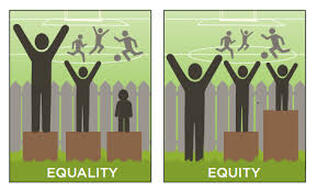Consulting and Training
P2P uses a Project-based and a Value-Based pricing strategy for its services. Value-based pricing is a pricing strategy where the price charged is determined by the value P2P will create for your company. During the consulting value conversation, P2P will ask you a series of deep and meaningful consulting questions. Through these questions, you will share with P2P that the value for your company as a result of solving the problem at hand will result in a gain of XX dollars over the next 12 to 18 months. We will determine a fee from this conversation.
EDI Training

Equity, Diversity, and Inclusion are at the heart of increasing access to opportunity and health. Recognizing, understanding, and challenging habitual structures of privilege and oppression will be critical for creating a culture in the United States that meets the needs of all people and is sustainable. Building a common language and understanding – even if we don’t all believe the same things -- is important for creating the bonds and relationships necessary to build equity. Throughout this course, we will examine how to use an equity lens for analysis, framing, communication, and development. We will discuss the historical and present-day context creating the inequities in our communities and across the country. Participants will be asked to identify the ways in which privilege and oppression and social advantage and social disadvantage have played a role in their lives and how it impacts the ways in which they interact with people, systems, and institutions. This course will be collaborative in its implementation as we will look to the participants to help identify important content, foster discussions amongst their colleagues, and identify how to bring an equity lens to all of the work of the program.Course Goals: (1) After leaders complete this course, they should be able to: (2) Develop a common language for equity, diversity, and inclusion to support communication, knowledge sharing, and collaboration. (3) Recognize the historical context of equity, diversity, and inclusion. (4) Describe the role of privilege and oppression in systems and institutions. (5) Recognize the interplay of “isms.” (6) Discover how to apply an equity lens. (7) Identify action steps to bring equity into practices in their organizations and/or communities. (8) Begin developing their personal EDI stories.
ABCD Training

The Prison-to-Professionals program utilizes an asset-based community development (ABCD) model to achieve the program’s goal. ABCD is a methodology for the sustainable development of communities based on their strengths and potentials. It involves assessing the resources, skills, and experience available in a community, organizing the community around issues that move its members into action, and then determining and taking appropriate action. The P2P community is currently and formerly incarcerated men and women and their families. This method uses the community's own assets and resources as the basis for development. ABCD is an evidence-based practice (EBP) that empowers the people of the community by encouraging them to utilize what they already possess (mainly transferable skills, explained further later).
Equity in college admissions

Structural inequities in higher education exist. Today only 9 percent of low income students get a college degree by age 24, compared with 73 percent of higher income students, according to a study by the Pell Institute. As higher education professionals committed to breaking down the barriers to college and career access, we must acknowledge and confront the obstacles students face when navigating the post-secondary planning process. In this course, we discuss five key strategies to accomplish that.
Trauma Informed Training for Staff and Faculty

Section I reviews the relevant research literature. For contextual background, we will briefly discuss the reentry crisis, employment barriers that the formerly incarcerated face, and the current state of the law on measures to protect them from job discrimination. Next, we will explore the meaning of “cultural competence.” That will be followed by a review of a diverse body of literature relevant to the central issue of this component‐ the unique benefits and challenges afforded to reentry agencies when they hire people with histories of incarceration and other life experiences shared by the reentry population. In Section II, this component will offer some promising practices and lessons learned about how to develop a culturally competent workforce in a reentry agency. Recognizing there is no one‐size‐fits‐all approach, Section III will focus on principles that have general application and can be adapted to best serve the needs of each individual agency.